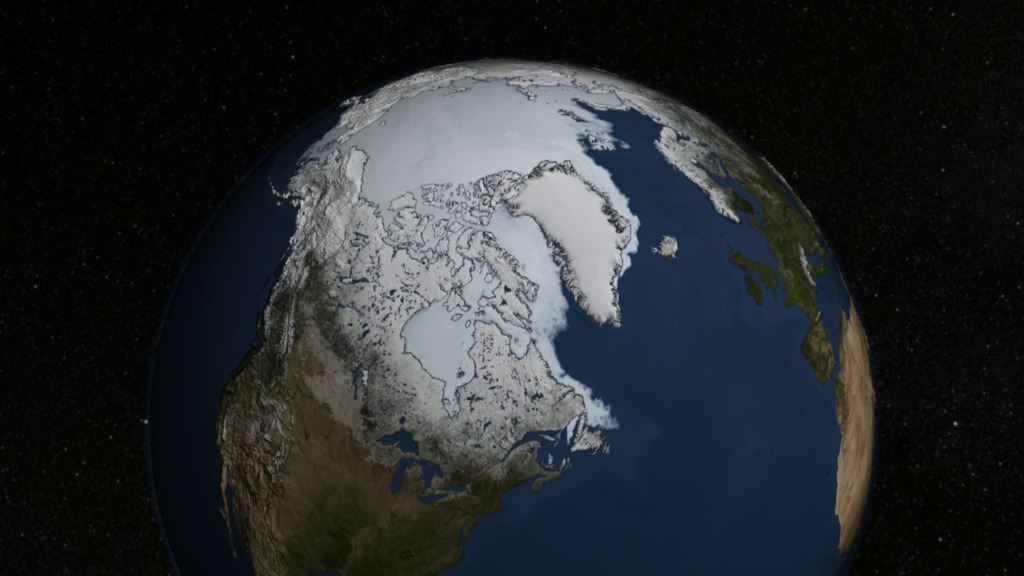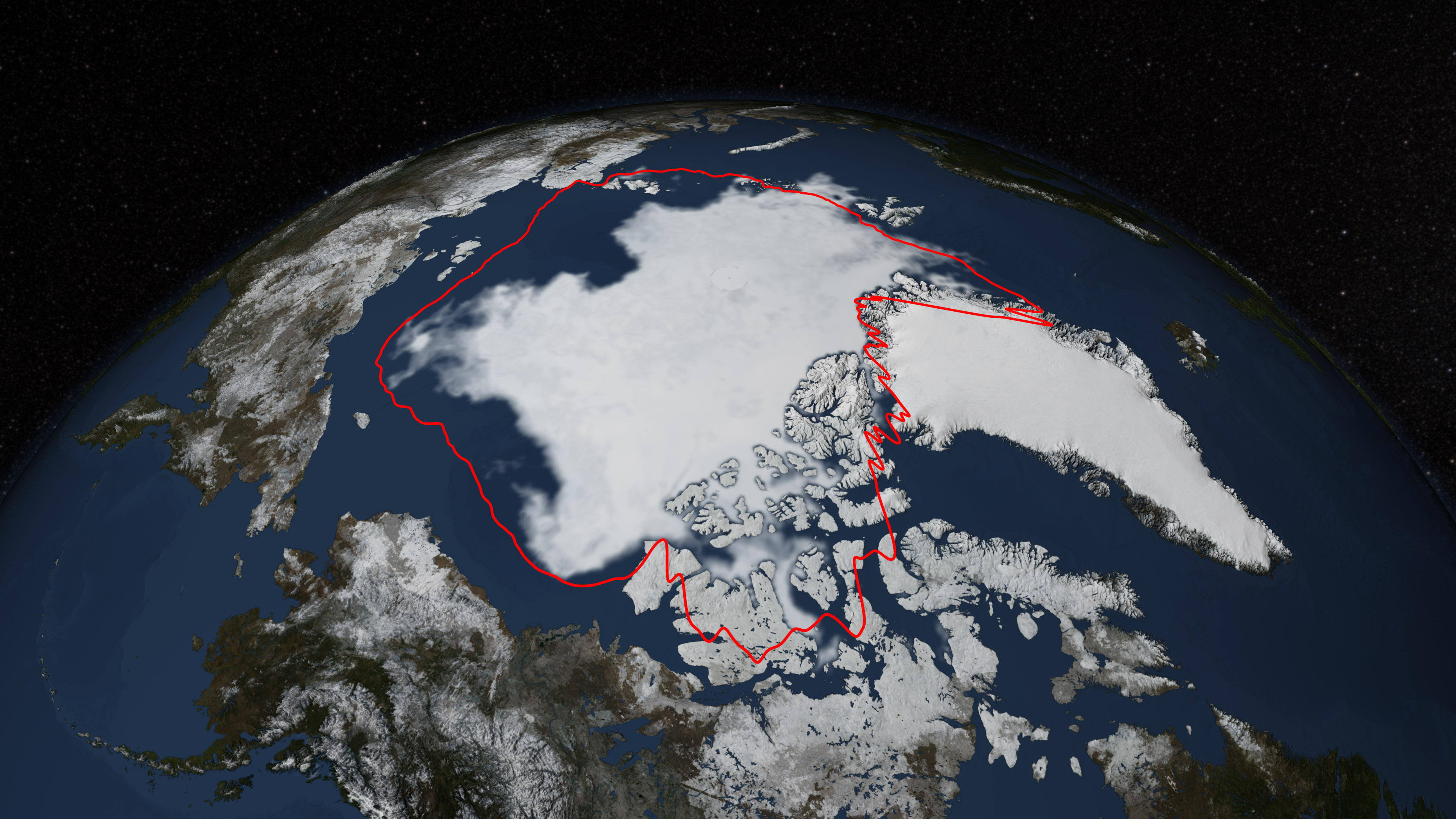Shrinking Ice
Arctic sea ice plays an important role in regulating Earth’s climate. The thickness and extent of the sea ice varies over the course of the year due to changes in the amount of incoming energy from the sun. Since the late 1970s, NASA has used satellites and aircraft to monitor the sea ice and create an ongoing record of its health. Observations in recent years show the sea ice is receding to alarmingly low levels during the summer melt season, the time when it reaches a yearly minimum extent. But that’s not all. According to scientists, the Arctic is also losing about 13 percent of its sea ice each decade. If the trend continues, the region could become free of ice in the summer by the end of the century. Watch the video to see the retreat of Arctic sea ice leading up to this year's minimum extent.

How much longer will sea ice cover the Arctic?
This visualization shows Arctic sea ice coverage from March 21 to Sept. 17, 2014.

Arctic sea ice reached a yearly minimum extent on Sept. 17, 2014, covering an area of 1.94 million square miles.

Arctic sea ice coverage on Sept. 17 is shown in comparison to the 1981-2010 average (red line) of 2.40 million square miles.

Scientists use Earth-observing satellites to monitor changes in Arctic sea ice.
For More Information
See NASA.gov
Credits
Please give credit for this item to:
NASA's Goddard Space Flight Center
-
Animator
- Trent L. Schindler (USRA)
-
Project support
- Laurence Schuler (ADNET Systems, Inc.)
- Ian Jones (ADNET Systems, Inc.)
-
Writer
- Kayvon Sharghi (USRA)
Release date
This page was originally published on Thursday, September 25, 2014.
This page was last updated on Wednesday, May 3, 2023 at 1:50 PM EDT.

